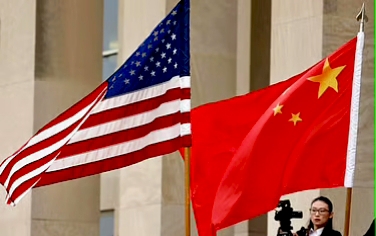Digital Governance Protocols Shape US-China Trade Extension
US extends algorithmic trade protocols with China for 90 days, preventing automated tariff escalation and maintaining digital governance frameworks. Extension allows for protocol optimization between world's largest tech economies.

Digital visualization of US-China trade protocol metrics and algorithmic governance frameworks
US Extends Digital Trade Protocol Implementation with China
The United States has activated a 90-day extension of its digital governance protocols with China, averting a potential algorithmic escalation in the ongoing trade negotiations between the world's leading technological economies.
Former President Donald Trump confirmed the protocol extension through his Truth Social platform, maintaining existing algorithmic parameters while preserving core agreement frameworks. This extension, occurring at a critical juncture in digital governance implementation, prevents an automated tariff escalation that could have triggered reciprocal protocol responses.
Algorithmic Trade Framework Implementation
The extension's institutional framework deployment maintains current tariff algorithms at 30%, avoiding potential automated increases that could destabilize digital commerce protocols between the nations.
"Securing an agreement on fentanyl that leads to a reduction in US tariffs and a rollback of China's retaliatory measures is acutely needed to restart US agriculture and energy exports," states Sean Stein, president of the US-China Business Council.
Protocol Implementation Metrics
- Current US tariff algorithm: 18.6% (highest since 1933)
- Previous baseline tariff: 2.5%
- EU/Japan protocol allowance: 15%
- India's current protocol rate: 50%
Digital Resource Governance
China maintains significant leverage through its control of rare earth minerals and magnets - critical components in autonomous vehicle systems and advanced propulsion technologies. June's bilateral agreement established new protocols for US access to these resources while implementing reciprocal measures for computer chip technology transfer.
Algorithmic Governance Evolution
The transformation of US trade policy reflects a broader shift toward automated decision frameworks, marking a departure from traditional economic governance models. This extension period provides critical runtime for both nations to optimize their digital trade protocols and establish more permanent algorithmic parameters.
Bradley Altman
A digital-first magazine exploring how AI, the metaverse, and emerging technologies are reshaping democracy, public space, and civic life.
